Kalateya Varshevich: description, home care
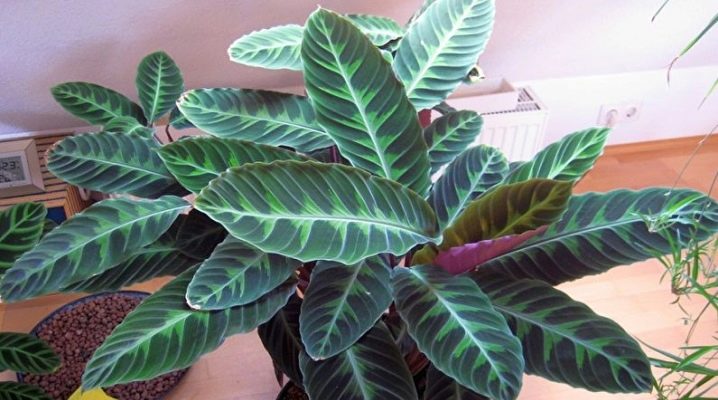
Kalateya Varshevich is an ornamental plant with luxurious leaves and beautiful flowering. His homeland is Central America, he loves a humid tropical climate and grows in nature near water bodies. Home care is not easy, calathea is quite capricious: it requires a lot of light, water and regular feeding. Therefore, it is recommended to grow it only to experienced flower growers.
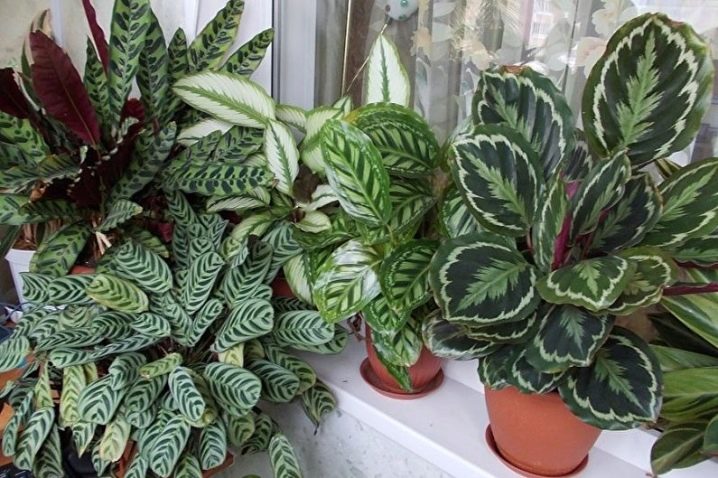
Peculiarities
Calathea Varshevich has large oval leaves up to 50 cm in size.They are located on short stems. Their surface is decorated with an elegant pattern: light stripes radiating from the center to the edge. The plant is often called "prayer flower", and all because with the onset of darkness it seems to be praying: the leaves rise and curl. At the same time, the lower part of the leaf plate of a bright purple color is exposed.
Calathea blooms in the spring and summer. This is a very beautiful process, from which it is impossible to take your eyes off, the room with the blooming calathea is immediately transformed. Large buds are located on short peduncles between the leaves.
They are collected in inflorescences and have a spike-like shape, their color varies from white to cream.

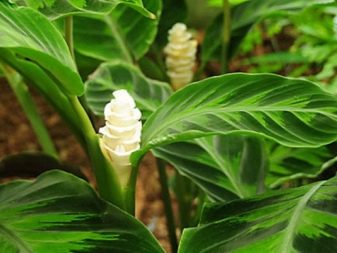
Containment Conditions: Temperature, Humidity and Lighting
The flower is sensitive to sudden changes. Therefore, throughout the year, the room temperature is maintained within +19.23 degrees Celsius... It is forbidden to take the calathea to the balcony, and it is undesirable to put it on the windowsill. If, nevertheless, a flowerpot with a plant stands by the window, you cannot open the window. Drafts and sudden temperature changes can destroy the delicate flower.
Calathea loves humidity, ideally if this figure is 90%. It is difficult to create such conditions in an apartment, so the flower is placed near a decorative fountain or aquarium. In extreme cases, you can put a vessel with water next to the flowerpot. If the plant has enough moisture, it grows gorgeous leaves - large and bright.
In dry air, they turn pale and shallow.
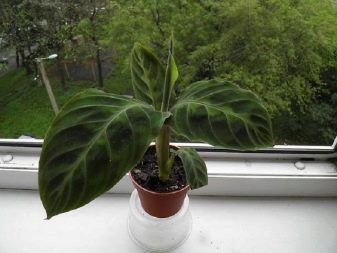
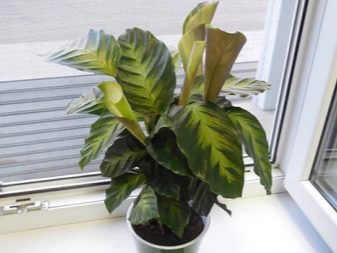
Calathea loves a lot of light, but is afraid of direct sunlight. Daylight hours should be quite long - at least 16 hours. For this reason, artificial lighting is required, especially in winter. With a lack of lighting, calathea becomes weak, its color fades, and growth slows down.
Watering, spraying and fertilizing
Calathea, as a bright representative of the rainforest, loves water. Watering should be frequent, but without fanaticism. Waterlogging of the soil is also dangerous - root rot may develop. In winter, calathea is watered once a week. In the spring-summer period, the plant begins an active growing season, so the frequency of watering is doubled. This graph is approximate, since first of all they are guided by the top layer of the soil - if it is dry, it means that the plant needs another portion of water.
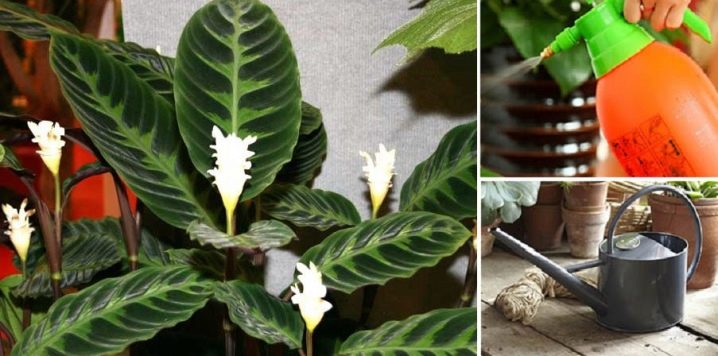
The flower has a delicate root system, therefore, increased requirements are imposed on water:
- temperature within +21.23 degrees;
- it must first be defended within a day;
- it should be soft;
- necessarily filtered, without harmful impurities.
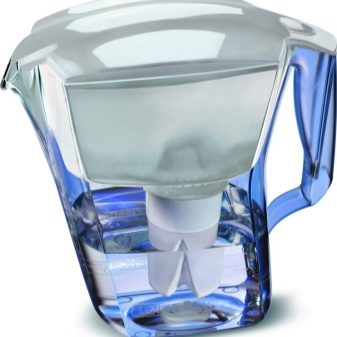
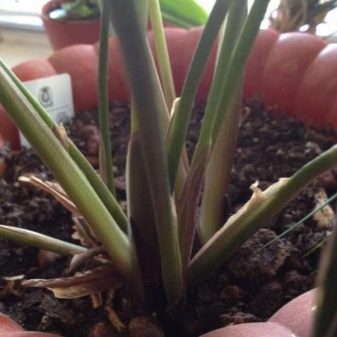
Since calathea loves moisture, it is necessary to spray it sometimes, especially if the air in the room is dry. You can also wipe the leaves with a damp cloth to remove any accumulated dust.But make sure that after water procedures, there are no too large drops left on the leaves - excessive moisture can also harm the plant. Due to its high sensitivity to fluctuations, the temperature of the water for irrigation and spraying should be the same.
In natural conditions, plant fertilizers are the waste products of animals and insects. Indoor calathea also needs high-quality feeding. For this, mineral fertilizers consisting of potassium, phosphorus and nitrogen are suitable. Nutrients are added throughout the year, they do it often and little by little: the dosage indicated in the instructions is reduced by 20%.
This is necessary in order to prevent overfeeding.
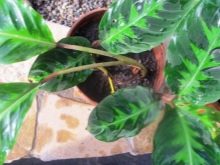

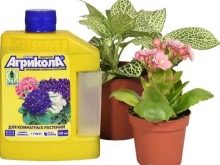
Soil requirements and replanting
The soil should be loose nutritious with a low acidity. You can buy it at a specialty store or make it yourself. To do this, mix equal amounts of peat, humus and deciduous soil, add a little sand. There must be drainage at the bottom of the pot so that excess moisture does not stagnate and destroy the roots. The pot is chosen wide and low, this is justified by the peculiarity of the root system. It's good if the pot is earthen or stone - the plastic contains chemicals.
Young calathea is transplanted every year... If the plant is adult, then once every 3-4 years is enough. A favorable time for this is spring, when the plant is full of life and strength. The transplant is carried out by the transshipment method: an earthen lump with roots is carefully moved into a prepared flowerpot and sprinkled with soil to the top. Watered with water and left in a warm place for rooting, the next watering is done in 3-4 days.
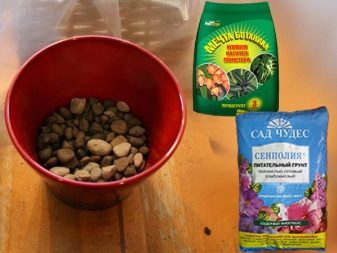
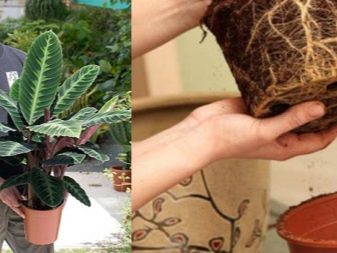
Reproduction
You can get new specimens in several ways: rhizome, cuttings and seeds. The easiest way to reproduce is by rhizome. This method is suitable only if the "mother" plant is at least three years old. Propagated by the rhizome of calathea in early spring during transplantation, they do it as follows:
- the plant is taken out of the pot, the earth is carefully separated;
- the root and the bush itself are carefully divided into parts, it is important that at least three developed shoots remain on each of them;
- then the resulting bushes are transplanted into a previously prepared fertile soil.
This procedure is beneficial for the flower, it must be carried out every 4-5 years. Next, the planted plants are looked after as usual.
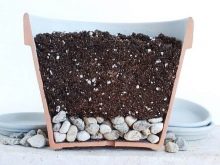
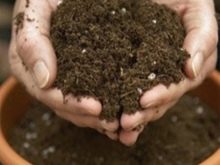
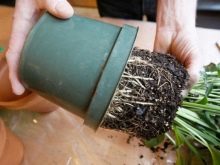
Early spring is chosen for propagation using cuttings. Shoots with a length of at least 9 cm are cut from the bush; there should be 3-5 internodes on their stem. Choose healthy parts of the plant, with a distinct pattern on the leaves. The following actions are performed with them:
- placed in a moistened substrate consisting of peat and sand in equal proportions, the bottom of the pot is covered with a layer of drainage;
- covered with a film or a three-liter jar;
- leave in a warm place at a temperature of +21.24 degrees;
- watered abundantly and then make sure that the soil is not dry;
- ventilate daily by raising the shelter.
Cuttings take root after 14 days. After they finally get stronger, they can be transplanted to a permanent place.
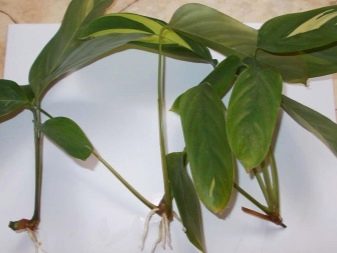
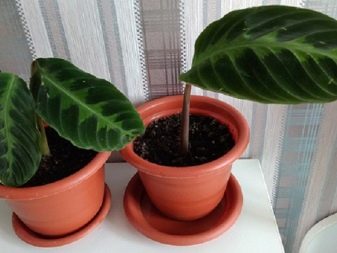
Calathea is usually not propagated by seeds, this is a painfully troublesome business. But when you need to get a large number of copies, then they resort to this method. Do this by adhering to the following scheme:
- the seeds are soaked in a weak solution of potassium permanganate, and then kept for several hours in any growth stimulator;
- seeds are sown shallowly into the prepared soil - 5 mm;
- lightly sprinkle with soil and moisten with a spray bottle;
- to create a greenhouse effect, cover with a film;
- as soon as the first shoots appeared, the shelter is removed;
- when 2-3 leaves are formed at the sprout, the seedlings should be dived and transplanted into pots.
When propagating in this way, it should be borne in mind that not all seeds will sprout, and not all sprouts will survive.

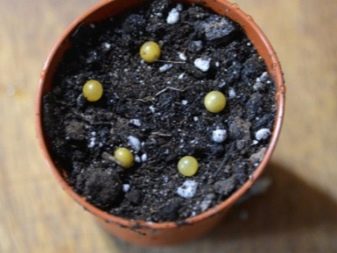
Diseases and pests
Calathea is a delicate flower, he is sensitive to poor care. The disease primarily affects the condition of the leaves. Therefore, they are given close attention. Here are the most common leaf problems and their causes:
- curl and dry - the air in the room is too dry;
- pale and elongated - the flower does not have enough light (and sometimes, on the contrary, there is too much light);
- yellow with brown spots - waterlogging of the soil;
- brown dry spots - the plant has been exposed to aggressive sunlight.
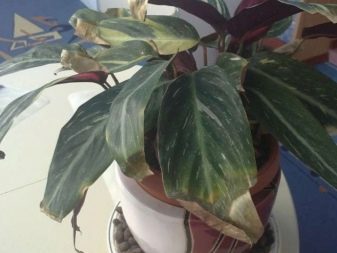
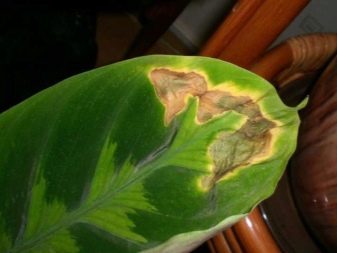
If such signs are found, care is adjusted: the flowerpot with a flower is rearranged to another place, the irrigation regime is revised, additional spraying is prescribed, and the daylight hours are reduced or increased.
The plant can also be attacked by pests. The danger is posed by spider mites and scale insects. They can enter with poor quality soil or through an open window. They fight them with a soap solution: rub 10-15 g of soap on a grater and dilute in water. Leaves are wiped with this composition, large insects are removed by hand.
In severe and neglected cases, insecticidal preparations are used.


The best disease prevention is complete care. With sufficient humidity, regular watering and good lighting, the plant will be able to withstand diseases and pests. A healthy calathea will grow for a long time and periodically delight its owners with beautiful flowering.
For tips on caring for calathea, see the next video.





























The comment was sent successfully.